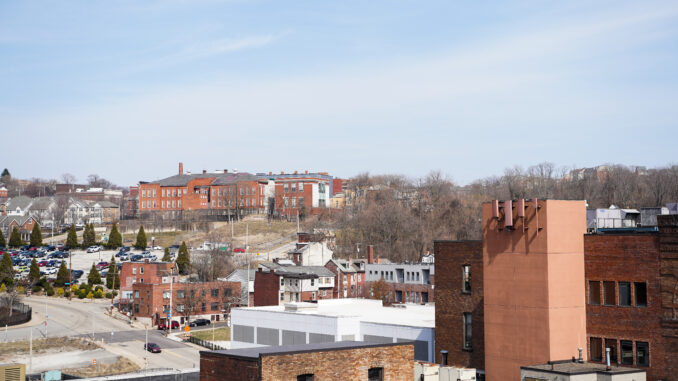

Emily Ambery | Staff Writer
03/11/2021
A Duquesne study found that people living in socioeconomically and racially segregated neighborhoods may be disproportionately impacted by COVID-19 deaths.
Dr. Ahmad Khanijahani, a researcher and assistant professor in the Rangos School of Health Sciences, published this study in the Journal of Racial and Ethnic Health Disparities in January.
Khanijahani gathered data from over 3,100 counties and over 73,000 census tracts within those counties in all 50 states and the District of Columbia.
Khanijahani classified two models of segregation: racial and socioeconomic. The first classified racially-concentrated segregation as a county with 25% or more of the population as African American. The second classified socioeconomic segregation as female-headed households, living below the federal poverty level, households on public assistance, unemployment rates and adults over 25 years old whose education was less than a high school degree. The percentages of census tract population that fit these qualifications were ranked and the top 25% were classified as socioeconomically segregated.
“By knowing the amount of racially and socioeconomically segregated neighborhoods, we can try to predict the mortality rate of COVID-19,” Khanijahani said. “Both of these variables were associated with higher COVID-19 deaths, meaning that if there is a county in which there is a higher number of census tracts fitting the racial and socioeconomic qualifications, there were disproportionately higher COVID-19 deaths.”
The study controlled the other factors that might impact COVID-19 deaths, such as the percentage of 65 years or older population, population density, the percent of uninsured and other factors that could potentially impact mortality. Khanijahani explained that in studying this data, if these variables do not affect COVID-19 deaths, the number of deaths should be the same.
“In both models — racial segregation and socioeconomic segregation — for every 10% increase in the proportion of the population, the COVID-19 related deaths increased by 11 to 17% depending on the case,” Khanijahani said.
The potential reasons for the study’s results, such as the majority of the population being essential workers not able to work remotely or limited access to healthcare, highlight the importance of a tailored approach to health care distribution.
“Our goal in this paper is to identify the problem,” Khanijahani said. “One of the implications is with intervention, such as COVID-19 vaccine distribution. We need to establish that a one-size-fits all intervention is not going to work because of certain characteristics of each population.”
“COVID has highlighted the inequities that already existed and made them more plain for people that do not normally see them,” said Tiffany Taulton, an adjunct professor in the Bayer School of Natural and Environmental Sciences and the Director of Community Initiatives for the Hazelwood Initiative.
Hazelwood is one of Pittsburgh’s most racially diverse and lowest-income neighborhoods, with an approximately 40% Black population and a median income of $24,000. The Hazelwood Initiative works to ensure low- and moderate-income residents benefit from new investments in the neighborhood.
Taulton emphasized the importance of making healthcare, and specifically COVID vaccinations, available within the community.
“There needs to be more community-level outreach and doing the vaccinations in the actual community,” Taulton said.
Vaccination efforts that require transportation outside of the community or require online registration eliminate people that don’t have transportation, can’t afford to take transportation or don’t have access to Internet service.
Taulton and The Hazelwood Initiative helped with UPMC’s targeted vaccination effort for Hazelwood and other Pittsburgh communities by contacting the people within the community whose phone numbers they had on record to get them enrolled for the vaccine.
All Pennsylvanians can find out if they’re eligible for vaccination in Pennsylvania by visiting the Pennsylvania Health Department website, where they can also find available locations throughout the state.




